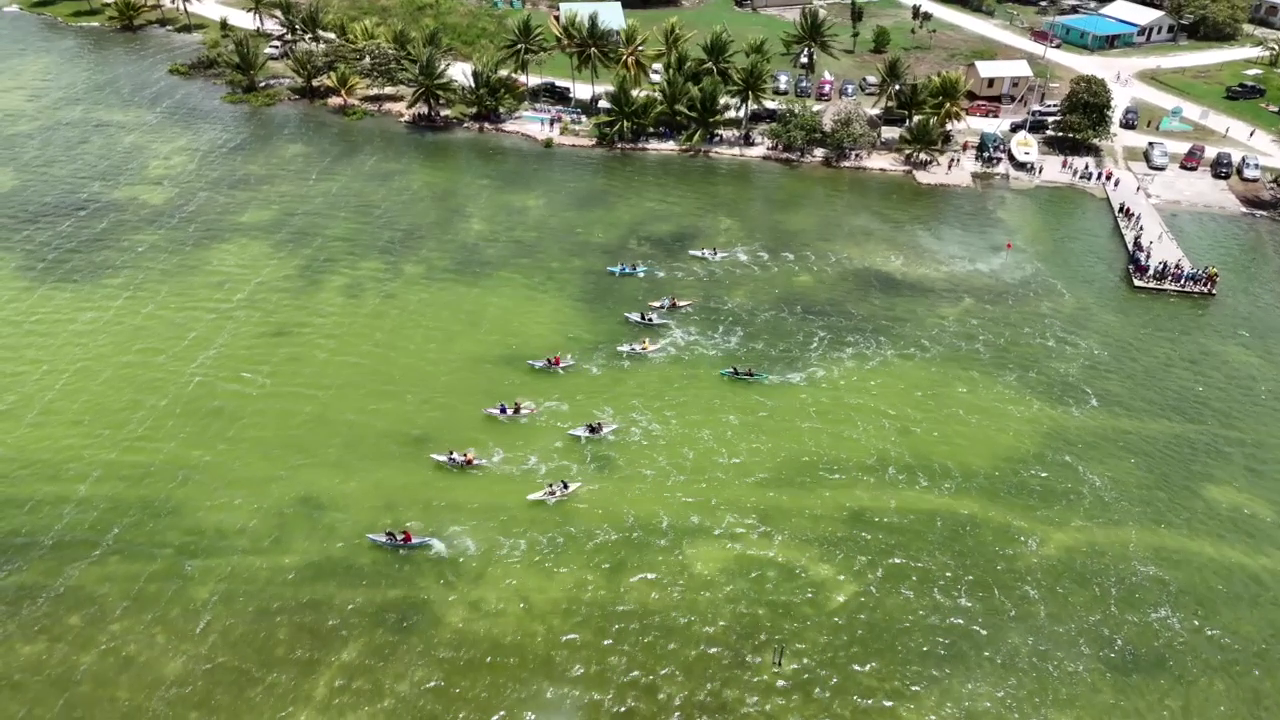Tonight, we’re heading to the quiet fishing village of Copper Bank in northern Belize where tradition meets technology, and paddles meet purpose. It’s not your typical race day. Picture this: local fishers, their families, and sleek dugout canoes, called cayucos, lining up for a high-energy race across the water. But this isn’t just about speed. It’s about community, culture, and a new wave of data-driven fishing that’s helping protect the ocean and the people who depend on it. From catch logs to cayuco races, this is a story of innovation, resilience, and the power of paddling forward together. Here’s News Five’s Isani Cayetano.
When we think about fishing, we often picture the catch: the fresh snapper, the lobster, the bounty of the sea. But behind every haul is something just as important: the data. That’s right, catch data is becoming a lifeline for small-scale commercial fishers across the region. It’s not just about numbers on a clipboard. This data helps protect fish stocks, supports local livelihoods, and ensures that the ocean can keep giving for generations to come.
Juliet Neal, Conservation Finance Officer, WWF
“As part of the licensing process, fisher captains are required to submit a logbook as part of their license requirements. And so, we thought of a way, how might this be easier for fishers to do? And we thought that having an app, it’s more portable than a paper-base which is what they are doing right now, and it also allows them to be able to upload and share information with the Fisheries Department in real time.”
Catch data tells us what’s being reeled in, and how much of it. That might sound simple, but it’s a big deal. This info helps scientists and fisheries managers keep tabs on fish populations, spot any troubling declines early, and make smart decisions about when to fish, how much to take, and when to give the ocean a break. It’s all about keeping our oceans healthy and our seafood sustainable.
“So the same information that the Fisheries Department has fishers also have. So that when we talk about how data and having a scientific and data-driven approach to fisheries management that it becomes more understandable for fishers because it quantifies what they are seeing. And then, it allows a lot more interaction and a lot more versatility and quickness in terms of sharing of data with these two platforms.”
Welcome to Copper Bank, a tiny fishing village tucked along the tranquil shores of Laguna Seca in the Corozal District. With its scenic waters, rich cultural roots, and a community built on fishing and farming, Copper Bank is more than just a dot on the map; here, life moves to the rhythm of the tides and tradition runs deep.
Marty Alvarez, Marine Protected Areas Manager, BAS
“We’re here in Copper Bank, during the closed season of conch and lobster, meeting with fishers who are now signed up for an e-logbook which is an electronic cash logbook that fishers will now use to submit their catch data.”
For small-scale fishers, every trip out to sea is a careful balance of time, fuel, and hope. But what if the secret to a better catch, and a better living, wasn’t just in the water, but in the data? By knowing exactly what’s being caught and when, fishers can plan smarter trips, save on fuel and gear, and head straight to the most productive spots. But it doesn’t stop there. This data is also giving them a stronger voice at the policy table, showing just how much they contribute to our economy and food security.
“So, to sign fishers up for the e-logbook, they are required to have an email address. What we did for fisher who did not have an email address, we created one for them and explained how that can help them keep track of their data and how they will use it to work with the app and how easy it was. We also demonstrated the use of the app and walked them through it so that they, themselves, got a feel.”
Cayuco racing is more than just a sport, it’s a fast-paced paddle through history. Teams race in traditional dugout canoes, once carved by Indigenous communities in Panama. Today, the boats are sleeker, but the spirit remains the same: every race honors a deep cultural legacy and the power of teamwork on the water.
“We are here with the captains of the vessels and they are the ones who are signing their crew members onto this cayuco race. So it’s a two-man race and we’ve partnered with WWF, DFC, and the Belize Audubon Society to make this possible.”
Juliet Neal
“So we came up with the idea of having a cayuco race because they already have cayucos and this is just another fun way to get the families out and so we’re really excited about the fact that we have participants from neighboring communities: Copper Bank and Chunox. These are fishers who work in the same space, Area Six, largely, and we took this opportunity to get them to sign up.
Marty Alvarez
“First place is six hundred dollars… so I gotta count it right. Uno, dos, tres…”
Isani Cayetano for News Five.
